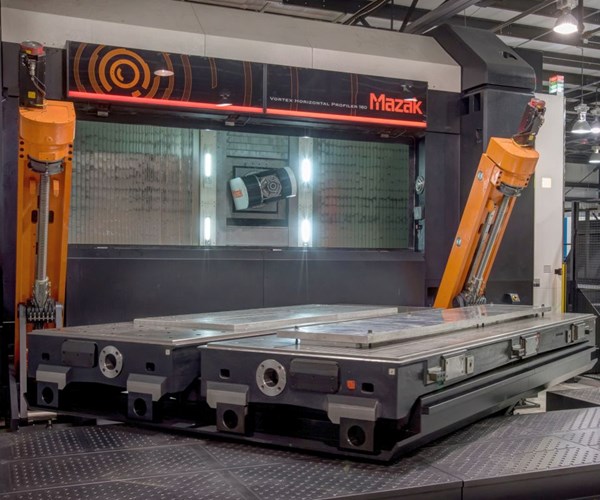What’s Behind Door Number Three?
While most shops are producing shorter aerospace parts on five-axis machines or larger parts on gantry-type equipment, this shop found its niche somewhere in the middle thanks to an advanced profiling machining system from Mazak.
Share







According to Greg Britton, CEO of , the part-processing “sweet spot” for his company falls between five-axis machining centers and big, gantry-type machines. He says that most aerospace shops machining aircraft structural components can cut parts as long as 11 feet, but when it comes to sizes beyond that, a shop must make a committed effort to incorporate the necessary equipment: gantry-style machines that can accommodate parts ranging to 22 feet long. Unfortunately, he says these machines are expensive to operate, and the costs typically translate to higher part prices for customers.
Unwilling to settle on producing shorter parts or passing the buck, Mr. Britton searched for another option. Door number three, so to speak, was the Vortex Horizontal Profiler 160 from Mazak Corp. Its work envelope is designed specifically for the aerospace market with a work envelope that can accommodate about 70 percent of common, large-size airframe and aerospace parts. The number of shops that can cost-effectively process such parts is limited, the company says. Learn more in this case study.
Related Content
-
5 Tips for Running a Profitable Aerospace Shop
Aerospace machining is a demanding and competitive sector of manufacturing, but this shop demonstrates five ways to find aerospace success.
-
How to Determine the Currently Active Work Offset Number
Determining the currently active work offset number is practical when the program zero point is changing between workpieces in a production run.
-
Inside the Premium Machine Shop Making Fasteners
AMPG can’t help but take risks — its management doesn’t know how to run machines. But these risks have enabled it to become a runaway success in its market.












